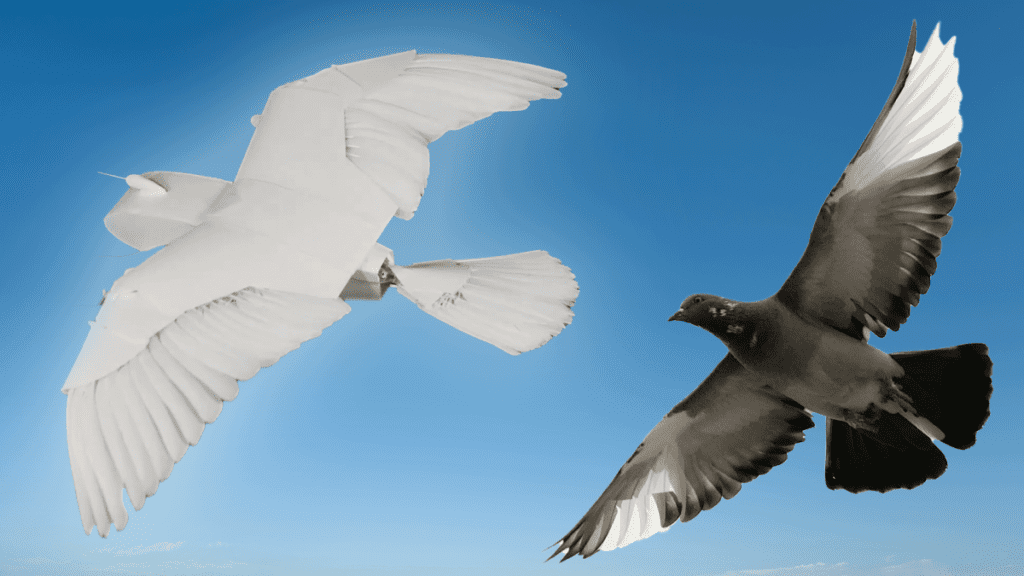PigeonBot II: The Flying Robot Unraveling Avian Secrets
Have you ever watched a bird fly effortlessly, even in turbulent winds, and wondered how they do it? Meet PigeonBot II, an innovative flying robot that’s swooping in to uncover the mysteries of how birds maintain their balance in the air—insights that could pave the way for more stable, rudderless aircraft designs.
Why Do Birds Fly Better?
Unlike airplanes, which rely on rudders and vertical tails to keep their course steady, birds seem to effortlessly navigate through turbulence. Scientists have long believed that birds adjust their wings and tails to stay balanced mid-flight, but proving this theory using real birds has proven to be quite a challenge.
Enter PigeonBot II
Developed by a team at the American Association for the Advancement of Science (AAAS), PigeonBot II is designed to mimic the flight mechanics of pigeons closely. This robot isn’t just any flying contraption; it’s equipped with morphing wings, pigeon-like wingtips, and even 52 actual pigeon feathers. Talk about realism! PigeonBot II can elevate, spread its wings, tilt, and control its tail, just like a real bird, providing an unprecedented opportunity to study avian flight in a controlled environment.
Testing the Theory
Led by the brilliant Eric Chang, the team took PigeonBot II on a series of test flights in both indoor arenas and outdoor settings. The results? They’ve gathered compelling evidence that supports the idea of birds using their wings and tails to maintain stability, potentially inspiring future aircraft designs that operate with much greater efficiency.
The Bigger Picture
Imagine a world where planes fly smoothly through rough weather, helping to eliminate those dreaded turbulence experiences we’ve all had—whether from a flight over the Rockies or near the Great Lakes here in the Midwest. The insights gleaned from PigeonBot II could be game-changers in aviation technology, reducing the need for excessive mechanical components and paving the way for more eco-friendly flying options.
Join the Conversation
As technology advances, the intersection of robotics and biology opens up fascinating avenues for exploration and innovation. This flying robot not only makes us rethink flight dynamics but also encourages us to examine nature’s solutions as models for our technological challenges.
The AI Buzz Hub team is excited to see where these breakthroughs take us. Want to stay in the loop on all things AI? Subscribe to our newsletter or share this article with your fellow enthusiasts.




